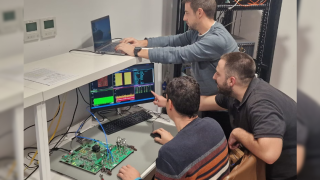The partnership will focus on creating innovative 5G use cases at the network edge that use Nokia’s service enablement platform to enable innovative use cases at the edge of the RAN.
Frederico Nava, director of solutions and consulting at the R&D centre, CPQD, said: “This is an important collaboration that will help to shape the future of 5G networks in Brazil. We look forward to a fruitful and successful partnership with Nokia and look forward to introducing a range of innovative 5G-based use cases to the market.”
CPQD — Telecommunications Research and Development Centre (pictured) — is an independent government-affiliated research body. Founded in 1976, CPQD is one of Brazil’s largest independent R&D institutions in IT.
The Nokia-CPQD partnership will focus on 5G use cases in cooperation with Nokia’s Brazilian mobile operator customers including fixed wireless access, smart cities, IoT for Industry 4.0 and critical networks, which will be customised for the Brazilian market.
Ari Kynäslahti, head of technology and strategy at Nokia Mobile Networks, commented: “This important partnership will explore the potential for innovative 5G use cases that will have real-world value in Brazil across a range of different areas, such as smart cities and fixed wireless access. Our RAN intelligent controller will play a critical role in this research, helping to explore and trial new cutting-edge use cases that will put Brazil at the forefront in the 5G era.”
Nokia is emphasising the use of that RAN intelligent controller or RIC, which it describes as “a virtualised 5G optimisation technology that adds programmability” to the RAN. It enables artificial intelligence and machine learning as well as new services, said Nokia.
“It provides a framework for deploying applications from multiple sources. The near-real time RIC platform provides functions and interfaces that boost optimization, automation and faster, more flexible service deployments.”






